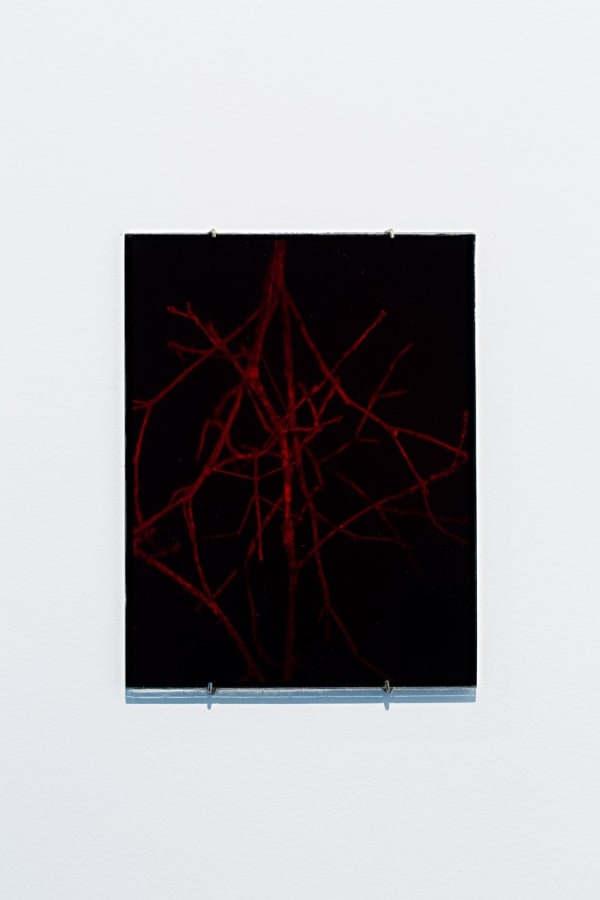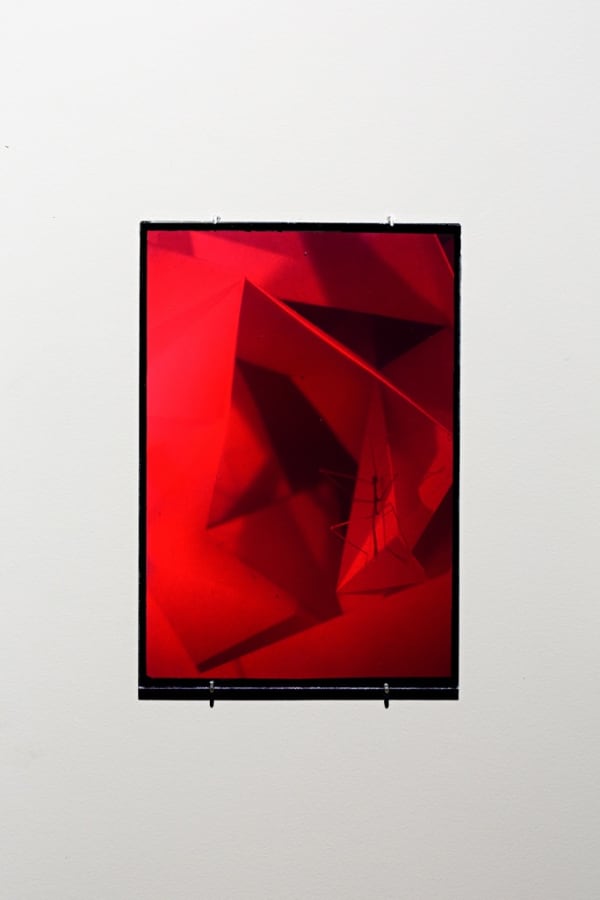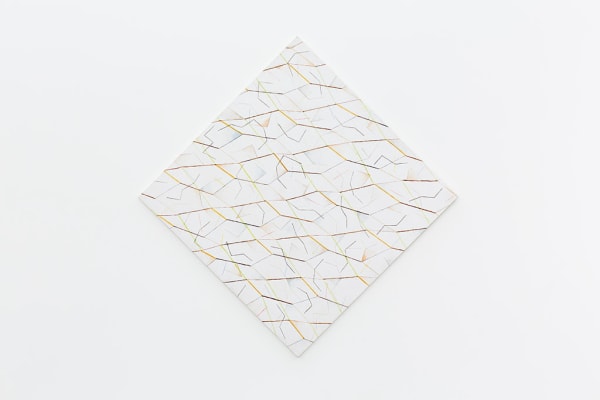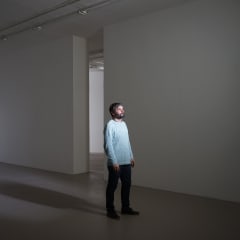Phasmides Daniel Steegmann Mangrané
A small group of holograms and paintings hung in the main space further explore these ideas. This odd integration of elements is surprisingly suave, as branches and insects blend seamlessly into geometric compositions, investigating a relationship between abstraction and nature. The recurrent figure of the stick insect evokes the possibility of an organism's integration with its environment; this integration is not only perfectly expressed in the phasmida's anatomy, but also in its behavior.
The evolutionary process through which animals camouflage themselves is called crypsis, from the Greek krypticos meaning fit for concealing, which implies that which is hidden in plain sight. In his Essay Mimicry and Legendary Psychasthenia, philosopher Roger Caillois suggests that contrary to popular belief, animals blend into their surroundings not to protect themselves, but rather out of a mythological desire to dissolve into the world.
By bringing together the phasmida and the abstract composition, Steegmann Mangrané aestheticizes biological function and naturalizes art. In Phasmides a quasi-invisible agent reveals points of contact between organic and aesthetic systems. When these creatures are hidden from us, we can only imagine it is because of a secret will to be unified with the artwork. When these creatures reveal themselves, they release the magic of visibility and open our vision to the generative force of life itself, overwhelming distinctions between nature and art. This brings to mind a remark of Paul Klee, that abstractionist so close to the heart of nature, Art does not reproduce the visible. It makes visible.
– Matthew Wood











